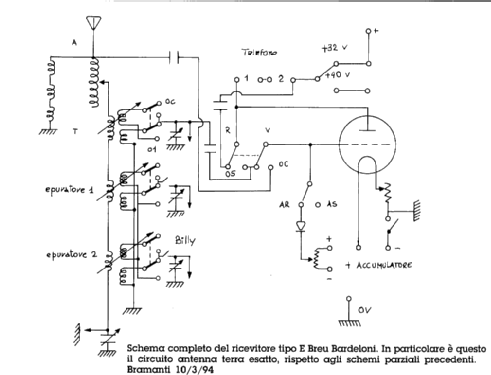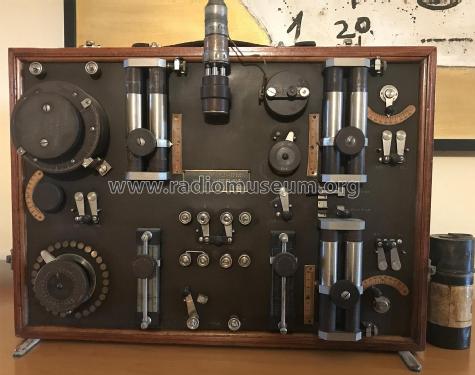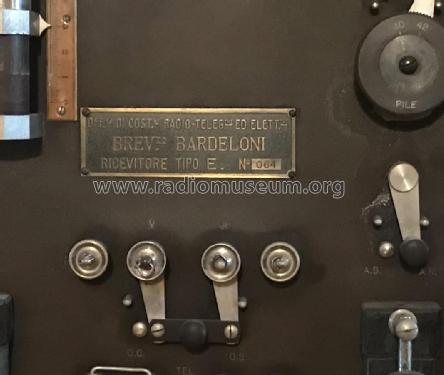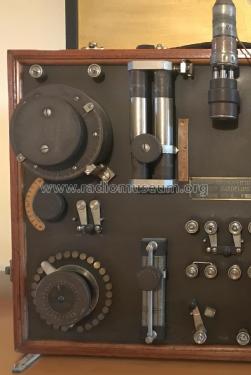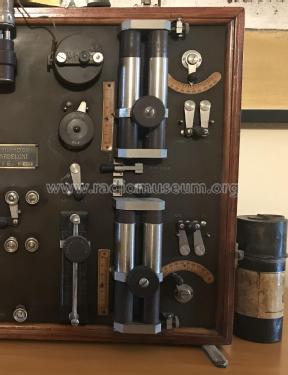Bardeloni Ricevitore Tipo E
MILITARY Italy (different makers for same equipm.)
- Country
- Italy
- Manufacturer / Brand
- MILITARY Italy (different makers for same equipm.)
- Year
- 1915 ?
- Category
- Military Receiver
- Radiomuseum.org ID
- 305394
Click on the schematic thumbnail to request the schematic as a free document.
- Number of Tubes
- 1
- Valves / Tubes
- Main principle
- Special principle (see notes)
- Power type and voltage
- Storage Battery for all (e.g. for car radios and amateur radios)
- Loudspeaker
- - For headphones or amp.
- Material
- Wooden case
- from Radiomuseum.org
- Model: Bardeloni Ricevitore Tipo E - MILITARY Italy different
- Shape
- Portable set > 8 inch (also usable without mains)
- Notes
-
Prof. Dr. Roberto Guidorzi:
The receiver was designed by Colonel Cesare Bardeloni, an engineer of the Italian Royal Engineer Corps during WW1, probably in 1915.Bardeloni was very interested in the application of radio communication techniques in the military field and most of his research and patents concerned the discrimination of a specific signal against other signals at the same frequency and disturbances.
To this purpose he tested the use of more antennas with different orientations directly inserted in the tuning circuits of a receiver. The “type E” receiver (by the way, it was probably the first radio receiver using an audion produced in Italy) included one of his inventions, i.e. a carborundum rectifier connected to the grid of the audion, endowed with a variable polarization circuit that could help in canceling low level disturbances.
He tested also the application of signals to the audion by means of capacitive links obtained by applying small metal plates to the side of the tube.
- Mentioned in
- Storia della radio in aviazione. Dalle origini al secondo dopoguerra by Giuseppe Pesce
- Author
- Model page created by Heribert Jung. See "Data change" for further contributors.
- Other Models
-
Here you find 17 models, 9 with images and 4 with schematics for wireless sets etc. In French: TSF for Télégraphie sans fil.
All listed radios etc. from MILITARY Italy (different makers for same equipm.)
